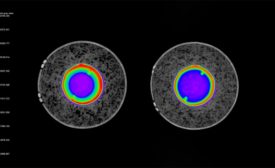Rahul Alreja
Rahul Alreja is the director of global sales and marketing, VJ Technologies. For more information, call (631) 589-88OO x1139, email [email protected] or visit vjt.com.
ARTICLES
Computed tomography is a powerful nondestructive evaluation (NDE) technique for both 2D and 3D cross-sectional images of an object from X-ray images.
Read More
How 3D Printing is Changing the Medical Device Field
Being able to manufacture these devices to conform to a patient’s anatomy is a game changer.
March 2, 2020
NDT
4 Reasons Why CT is the Best Method for Medical Device Quality Inspection
CT is a huge benefit to the medical device industry and will only continue to grow.
October 1, 2019
NDT and Industry 4.0
How Industry 4.0 is affecting NDT in manufacturing, and a brief look into different technologies that affect NDT.
April 1, 2019
Dispelling the Myths of CT
Advanced robotics, faster computers, and lean manufacturing processes are all combining to improve the efficiency of manufacturing.
October 1, 2018
Get our new eMagazine delivered to your inbox every month.
Stay in the know with Quality’s comprehensive coverage of the manufacturing and metrology industries.
SIGN UP TODAY!Copyright ©2024. All Rights Reserved BNP Media.
Design, CMS, Hosting & Web Development :: ePublishing





